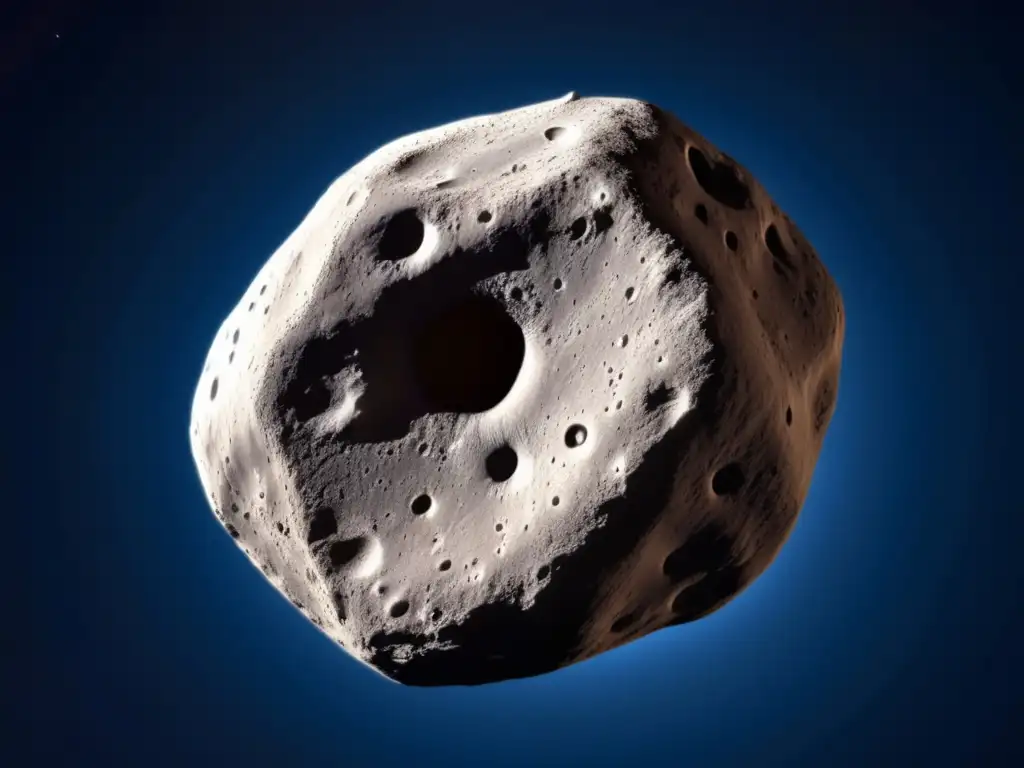The Discovery Of Asteroid 1997 XF11: A False Alarm

Introduction
In 1997, one of the most significant and controversial asteroid discoveries was made. Astronomer Jim Scotti discovered a potentially hazardous asteroid named 1997 XF11, which was believed to be on a collision course with Earth. The announcement caused widespread panic, but the subsequent analysis proved it was a false alarm. This article explores the discovery of asteroid 1997 XF11 and the lessons learned from this event.
The Discovery of Asteroid 1997 XF11

Initial Observations
Asteroid 1997 XF11 was discovered by astronomer Jim Scotti at the University of Arizona on December 6, 1997. The asteroid is approximately one kilometer in diameter and was observed using the Kitt Peak National Observatory's Spacewatch telescope in Arizona. Based on initial observations, astronomers determined that the asteroid could have a close encounter with Earth on October 26, 2028, at a distance of only 30,000 kilometers.
Media Coverage
The news of the discovery of asteroid 1997 XF11 quickly spread worldwide. The media coverage was intense, and the hype generated a lot of concern among the public. Some sensationalist headlines even suggested that the asteroid had a high chance of hitting Earth, which caused a great deal of anxiety and fear.
Clarification and Follow-up Observations
After the initial announcement, astronomers worldwide rushed to observe the asteroid further. These follow-up observations allowed for more accurate calculations of its trajectory and orbit. Through these observations, it became clear that the asteroid would miss Earth by a safe distance of 600,000 kilometers. This distance is greater than one and a half times the distance from Earth to the Moon.
The Lessons Learned

Improved Detection Techniques
The incident with asteroid 1997 XF11 led to significant improvements in asteroid detection techniques. The event emphasized the need for more extensive observation of near-Earth asteroids (NEAs) to prevent false alarms from happening again. The discovery of asteroid 1997 XF11 also demonstrated the importance of follow-up observations and the refining of calculations for accurate predictions.
The Importance of Communication
The media's coverage of the discovery of asteroid 1997 XF11 demonstrated the importance of clear communication between scientists, media, and the public. Scientists must express uncertainty when presenting their findings, avoiding sensationalism that can lead to panic and fear. The media must also be responsible for their reporting and accurately convey scientific information.
The Need for Preparedness
The false alarm of asteroid 1997 XF11 highlighted the need for preparedness for potential asteroid impacts. Scientists, policymakers, and the public need to work together to develop plans for mitigating the effects of an asteroid impact. This includes coordinated efforts to detect, track, deflect or destroy potentially hazardous asteroids.
Frequently Asked Questions

-
Was asteroid 1997 XF11 a real threat?
No, subsequent observations of the asteroid showed it would miss Earth by a safe distance of 600,000 kilometers.
-
What was the size of asteroid 1997 XF11?
Asteroid 1997 XF11 is approximately one kilometer in diameter.
-
What lessons were learned from the discovery of asteroid 1997 XF11?
The incident led to improvements in asteroid detection techniques, demonstrated the importance of communication, and emphasized the need for preparedness for potential asteroid impacts.
-
What is the role of follow-up observations in asteroid detection?
Follow-up observations allow for more accurate calculations of an asteroid's trajectory and orbit and can prevent false alarms from happening.
-
What can be done to mitigate the effects of a potential asteroid impact?
Coordinated efforts are needed to detect, track, deflect or destroy potentially hazardous asteroids, and develop plans for preparedness.
Conclusion
The discovery of asteroid 1997 XF11 was a significant event that led to important lessons about asteroid detection, communication, and preparedness. While the incident did not pose a real threat to Earth, it highlighted the need for coordinated efforts to prevent future false alarms and mitigate the effects of potential asteroid impacts. By learning from this experience, we can better understand and appreciate the risks that asteroids pose and take measures to protect ourselves and our planet.
Please share your thoughts and experiences related to asteroid discoveries in the comments section below. We encourage you to participate positively in www.asteroidrealm.com by subscribing, sharing this article on social networks, or other forms of interaction. Thank you for your time and attention.
Additional Resources

For further reading on asteroid detection, communication, and preparedness, please visit:
- NASA Planetary Defense Coordination Office
- NASA Center for Near Earth Object Studies
- International Astronomical Union Working Group on Near-Earth Objects
 The Elusive 3753 Cruithne: Earth's Second Moon?
The Elusive 3753 Cruithne: Earth's Second Moon? The Intriguing Tale Of Asteroid 2002 AA29
The Intriguing Tale Of Asteroid 2002 AA29 The Unforeseen Journey Of Asteroid 2018 LA
The Unforeseen Journey Of Asteroid 2018 LAIf you want to discover more articles similar to The Discovery Of Asteroid 1997 XF11: A False Alarm, you can visit the Asteroid Discoveries category.
Leave a Reply

Articulos relacionados: